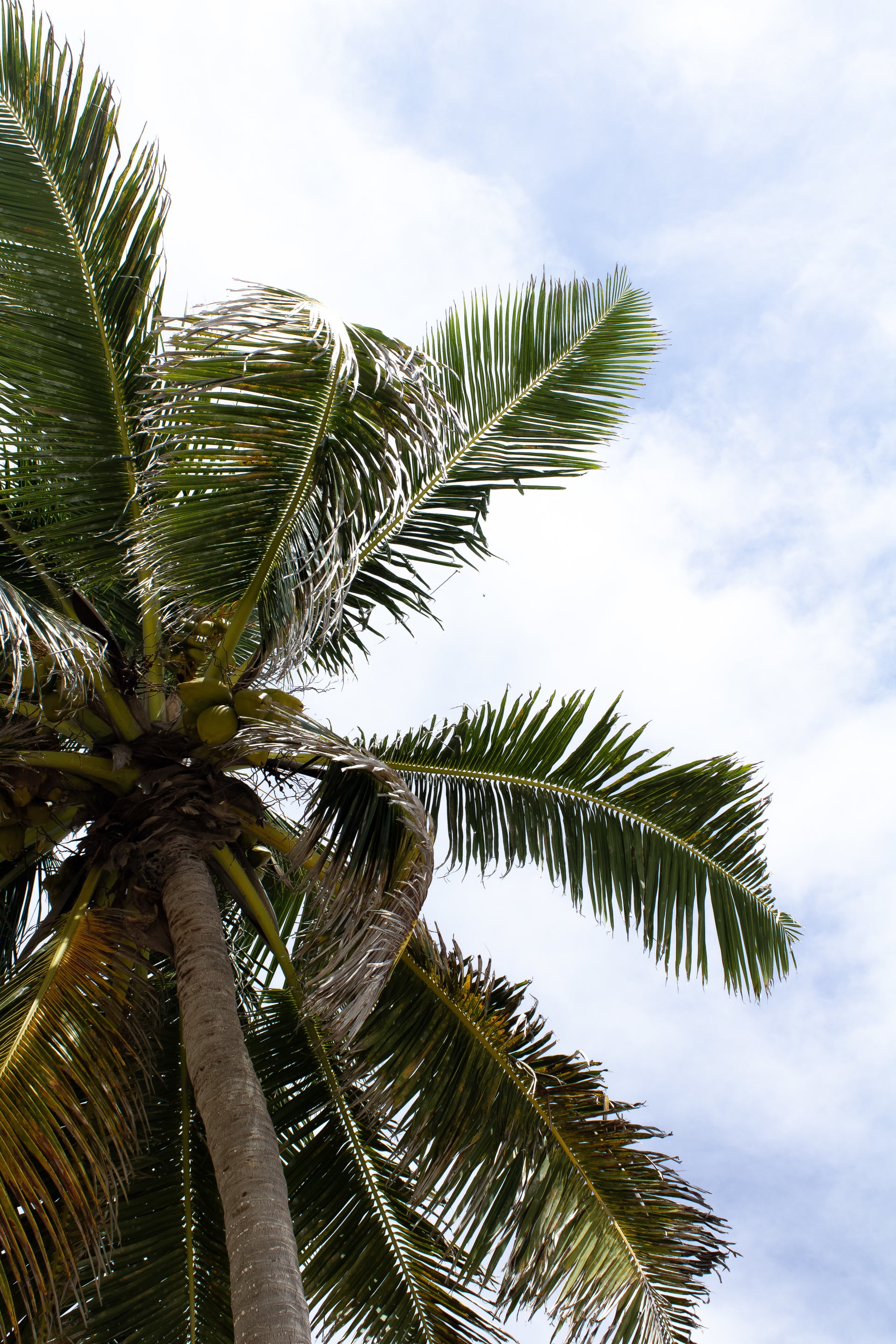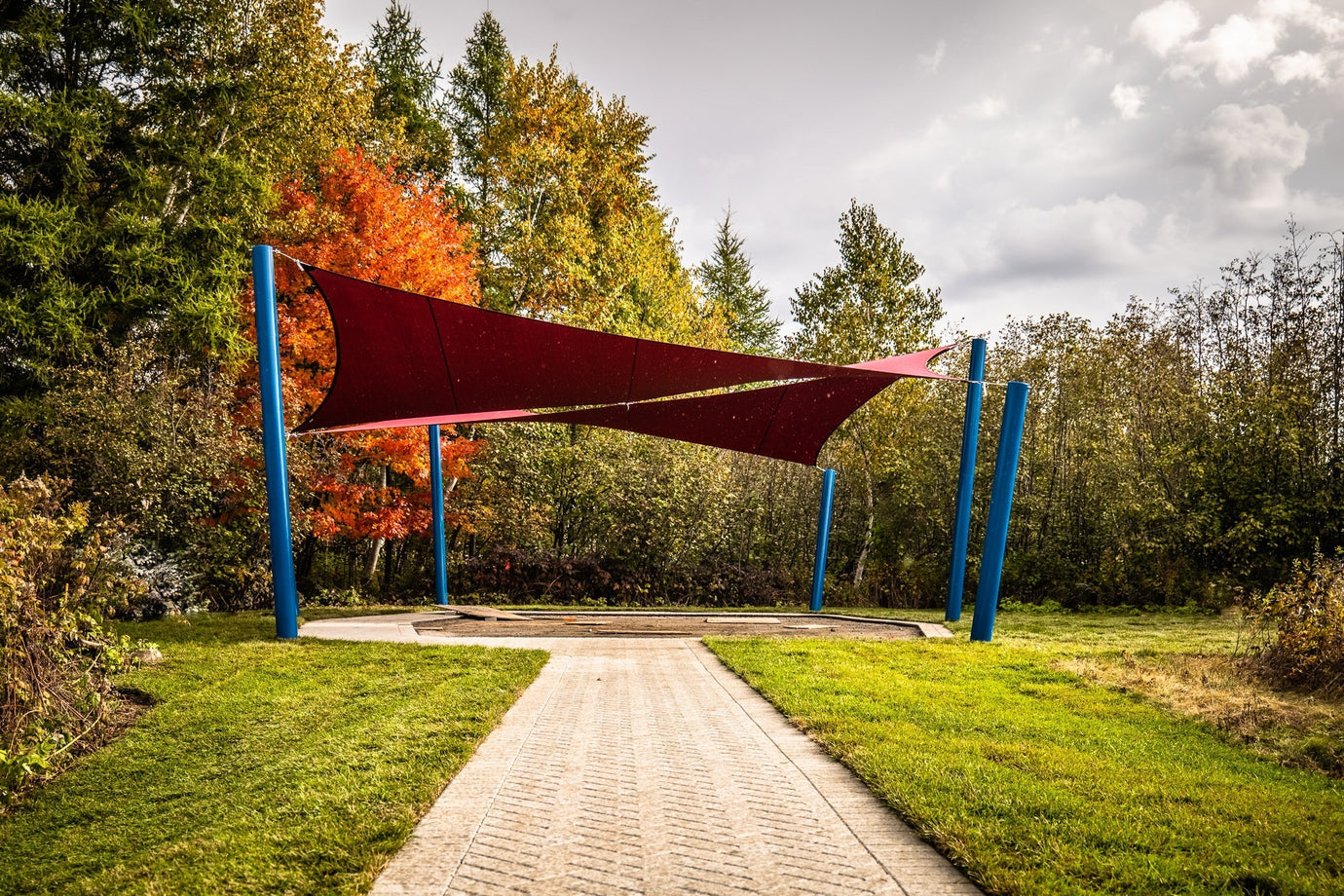If you’ve ever looked closely at a shade sail, you might notice the edges aren’t straight lines—they curve inward. This leads many to wonder: are the sides of a shade sail straight or curved? The answer lies in both function and form. This design feature isn’t just for looks—it’s essential for proper tensioning, fabric stability, and long-term performance.
What Is a Catenary Curve?
The sides of a shade sail follow what's known as a catenary curve. This is a gentle inward curve engineered to maintain consistent, balanced tension across the fabric. Without this curve, the sail would sag or flap in the wind, greatly reducing its effectiveness and longevity.
In the diagram above:
-
A to B represents the straight-line distance between two anchor points.
-
C is the midpoint of the fabric between A and B.
-
The white line indicates the depth of the curve—known as the catenary depth—which is measured from the center point C to the line between A and B.
For example, if the distance from A to B is 10 feet (120 inches), a standard 7% catenary curve would result in a curve depth of approximately 8.4 inches (7% of 120 inches).
Can the Curve Be Adjusted?
Yes! While a 7% curve is standard, adjustments can be made based on your specific installation:
Our advanced design software automatically calculates the optimal catenary curve based on your sail’s size, shape, and tensioning needs. This ensures your shade performs beautifully while maintaining structural integrity.
Need a Custom Catenary Design?
If you have a unique layout or need to navigate around an obstruction, our design team can help fine-tune your curve. Please get in contact with us for a tailored solution.
Frequently Asked Questions: Shade Sail Curvature
Why aren’t shade sail edges straight like a traditional tarp?
Straight-edged tarps tend to sag or flutter because they lack proper tension distribution. The curved edges on a shade sail follow a calculated catenary curve, which evenly distributes tension across the fabric. This prevents sagging and extends the life of the sail—something a flat-edge fabric simply can’t match.
Can I request a custom curvature for aesthetic reasons?
Yes, absolutely. While a 7% curve is standard for structural performance, many customers opt for greater or lesser curvature to suit their design vision. For example:
-
A deeper curve offers a more dramatic look or helps navigate around trees and other obstructions.
-
A shallower curve creates a cleaner visual line with slightly more coverage area, though it may require more tensioning support.
Let our team know your design priorities, and we can recommend the best curvature option for both function and form.
How does curvature affect the shade coverage area?
Because of the inward curve on each side, the total shaded area is slightly less than a true square or rectangle with the same perimeter dimensions. For instance, a 12x12 ft square shade sail with 7% curved edges will have slightly less coverage in the middle than a solid 12x12 ft tarp. If maximizing coverage is your goal, we can adjust the shape or suggest additional sails to compensate.
Do all shapes of shade sails have curved edges?
Yes—but the degree of curvature can vary depending on the shape:
-
Triangles usually have deeper curves per edge to balance tension evenly.
-
Rectangles and squares tend to have more subtle curves, as their structure allows for more balanced pulling from opposite corners.
No matter the shape, the curved design is essential to ensure the fabric remains taut and visually clean over time.





